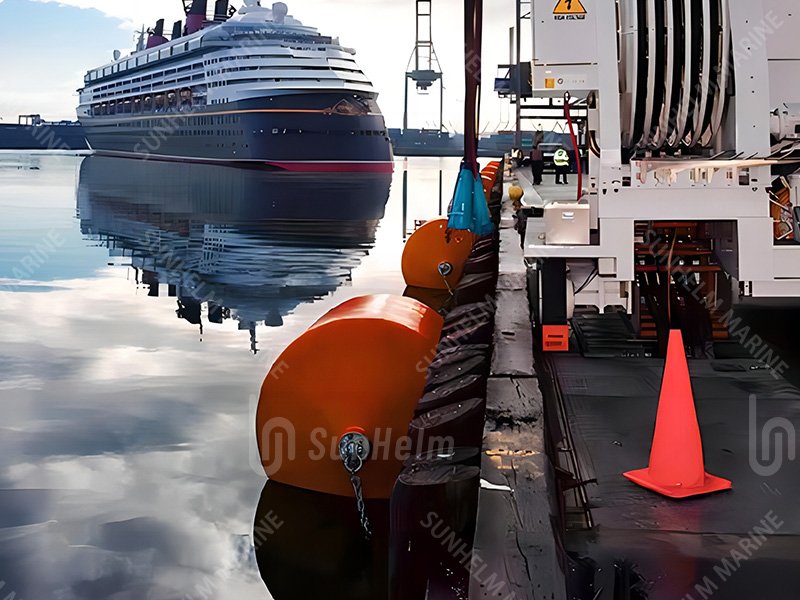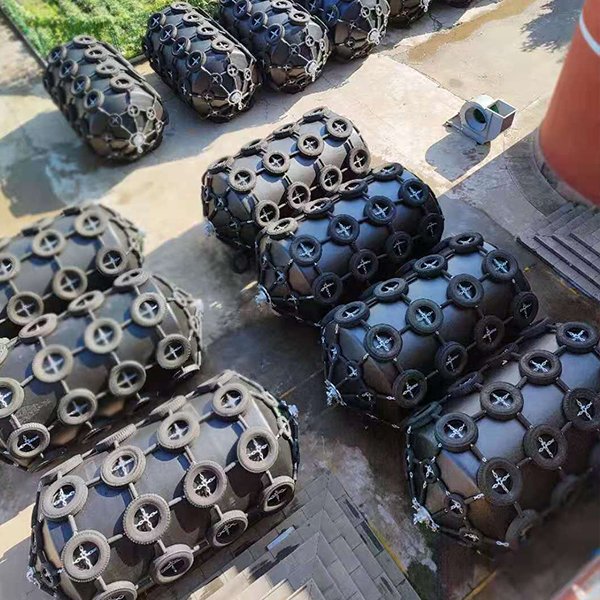Foam fenders are essential for protecting ships, docks, and other marine structures from impact. They act like a cushion, absorbing energy and reducing damage during berthing or mooring. But have you ever wondered why foam fenders sometimes separate or fail? Understanding the causes of foam fender separation is key to maintaining their performance and extending their service life. In this article, we’ll dive into the reasons behind foam fender failure and what you can do to prevent it.

Structure of Foam Fenders
To understand why foam fenders separate, it helps to know how they’re built. A typical foam fender consists of a high-density foam core wrapped in a tough rubber outer layer. This combination allows the fender to compress under load and then recover its shape, providing excellent energy absorption and protection.
The foam core is designed to float, which is why you might hear the term floating foam fenders. The rubber coating protects the core from abrasion, UV exposure, and harsh marine conditions. Together, these materials make foam fenders a reliable choice for many maritime applications.
Common Causes of Foam Fender Separation
Крыло из пенопласта separation can happen for several reasons. Here are the most common ones:
1. Excessive Friction and Wear
When пенопластовые крылья repeatedly rub against ship hulls, piers, or other fenders, the outer rubber layer can wear down over time. If the wear becomes severe, it can expose the foam core and eventually lead to separation.
2. Incorrect Installation or Mounting
Improper installation can create uneven stress on the fender. If the fender isn’t properly aligned or secured with the correct chains or ropes, parts of it may detach or separate under pressure.
3. Material Aging
Like any material exposed to the elements, the rubber and foam inside a fender degrade over time. Sunlight, saltwater, and temperature fluctuations can cause the adhesive bonding the layers to weaken, making separation more likely.
4. Extreme Weather and Environmental Conditions
Storms, strong currents, and harsh environments put extra stress on fenders. Extended exposure to cold, heat, or chemicals can accelerate wear and tear, potentially causing the fender to separate.
5. Weak Adhesive Bonding and Chain Wear
Some fenders fail simply because the glue holding the rubber to the foam core isn’t strong enough or the mounting chains have worn out. Sunhelmmarine has effectively tackled this problem by using heat-sealing technology and a built-in chain design, greatly reducing the risk of separation. This approach ensures that пенопластовые крылья remain intact even under heavy-duty marine operations.
How to Detect Damage in Foam Fenders
Regular inspection is crucial to catch separation early. Here’s what to look for:
- Visual Checks: Look for cracks, bulges, or exposed foam.
- Touch Tests: Press the fender to feel for soft spots or areas where the foam has detached from the rubber.
- Chain and Mounting Inspection: Make sure all chains, ropes, and brackets are in good condition and securely attached.
Detecting issues early allows you to repair minor damage before it escalates into complete separation. For floating foam filled fenders, it’s important to also check that they maintain proper buoyancy and alignment.
Preventive Measures
Prevention is always better than repair. Here are key steps to minimize foam fender separation:
- Proper Installation and Mounting
- Ensure fenders are correctly aligned and secured with the right chains or ropes.
- Avoid over-tightening, which can create stress points.
- Reduce Friction and Abrasion
- Use protective surfaces where fenders contact ships or other fenders.
- Avoid dragging fenders across sharp edges.
- Regular Maintenance
- Inspect fenders frequently for wear or damage.
- Replace aging or worn fenders promptly to prevent sudden failure.
- High-Quality Materials and Design
- Choosing fenders with heat-sealed layers and built-in chains, like those from Sunhelmmarine, can significantly reduce separation risk.
Comparison with Other Fender Types
Foam fenders are just one option among many types of marine fenders. Here’s a quick comparison:
- EVA Foam Fenders: Lightweight and flexible, suitable for small to medium vessels.
- Polyurethane Foam Fenders: Extremely durable, resistant to chemicals and abrasion.
- Foam Fenders: Provide excellent buoyancy and energy absorption, ideal for both small and large vessels.
Each type has advantages and limitations, but foam fenders stand out for their combination of floating capability, energy absorption, and cost-effectiveness.
Часто задаваемые вопросы (FAQ)
Q1: How long do foam fenders last?
A1: Depending on usage and environment, foam fenders typically last 5–10 years. Regular maintenance can extend their lifespan.
Q2: Can foam fenders be repaired if separated?
A2: Minor separation can sometimes be repaired with adhesive or patching, but significant damage usually requires replacement.
Q3: Are foam fenders suitable for all ship sizes?
A3: Yes, foam fenders come in various sizes and densities, making them suitable for vessels ranging from small yachts to large cargo ships.
Заключение
Foam fenders are a vital part of marine safety, but they can separate due to friction, poor installation, material aging, extreme conditions, or weak adhesive bonding. By understanding these causes, performing regular inspections, and choosing high-quality fenders with advanced designs—like Sunhelmmarine’s heat-sealed, built-in chain foam fenders—you can greatly reduce the risk of separation. Proper care and maintenance ensure foam fenders provide reliable protection for years to come.


